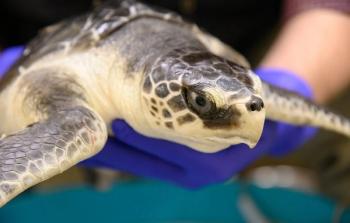
CDC study identifies US bovine veterinarians infected with avian influenza
Findings suggest that the number of human H5N1 cases may be higher than reported
According to results from a serosurvey conducted by the Centers for Disease Control and Prevention (CDC) on 150 US bovine veterinary practitioners, 3 tested positive for antibodies to highly pathogenic avian influenza (HPAI) A(H5), indicating recent H5N1 infection in these individuals. None of the practitioners who tested positive for antibodies reported any respiratory or flu-like symptoms, including conjunctivitis.
The study, “Seroprevalence of Highly Pathogenic Avian Influenza A(H5) Virus Infections Among Bovine Veterinary Practitioners,” aimed to investigate the prevalence of recent H5N1 infection among bovine veterinary practitioners in the US. To do this, public health officials with the CDC conducted an H5N1 serosurvey—which involves testing the blood serum of a group of individuals—on 150 bovine veterinarians that had had cattle exposure in the last 3 months.1
All participants surveyed were attendees of the 2024 American Association of Bovine Practitioners (AABP) conference.1,2 Participation was anonymous, with participants receiving a $50 USD gift card after the blood draw.
Of the 150 participants, 143 reported practicing primarily in 46 US states. Seven reported their primary practice was in Canada. Additionally, 82 (55%) practiced in states with dairy herds testing positive for H5N1, and 25 (17%) had worked with dairy cattle with known or suspected H5N1 infection.1
Of the 3 veterinarians found to have H5N1 antibodies, the CDC reported1:
- All provided care to multiple animals, including dairy cattle
- All reported wearing gloves or clothing covers during veterinary care activities for cattle, such as pregnancy checking or surgery
- None wore respiratory or eye protection
- Two also worked with nondairy cattle, one provided care to poultry, and one worked at livestock markets
- None worked with dairy cattle known or suspected to be infected with H5N1, but one veterinarian worked with poultry that was H5N1 positive
- Two of the veterinarians reported practicing in multiple US states and 2 practiced in states with known H5N1 infection among cattle
- One veterinarian provided care to dairy cattle only in Georgia and nondairy cattle in South Carolina—both of which are states that had not previously reported H5N1 infection in dairy cattle; this same practitioner reported no exposure to animals with known or suspected H5N1 infections
“…safety goggles and a respirator are recommended when working with uninfected animals in regions where there are confirmed or potentially infected animals.... HPAI A(H5) virus is known to be present in high concentrations in milk produced by infected cattle, introducing infection risk through respiratory, ocular, and gastrointestinal exposure…. Continued systematic surveillance of livestock and milk could aid in appropriate occupational hazard assessment,” advised the authors of the study.1
The study’s findings suggest that asymptomatic individuals could be going unnoticed, resulting in an underreporting of the actual number of infections. “These findings suggest that there might be HPAI A(H5) virus–infected dairy cattle in states where infection in dairy cattle has not yet been identified, highlighting the importance of rapid identification of infected dairy cattle through herd and bulk milk testing as recently announced by the US Department of Agriculture,” wrote the study's authors.1
“Detection of HPAI A(H5) antibodies in persons without reported symptoms suggests that surveillance of symptomatic exposed workers might underestimate human infection,” they continued
The study was conducted in collaboration with the AABP and the Ohio Department of Health in September 2024.1,2 Results were published February 13, 2025, in the CDC’s Morbidity and Mortality Weekly Report.
When the serosurvey was conducted, H5N1 had been detected in dairy cattle across 14 US states, and 4 human cases relating to dairy cattle exposure had been reported in 3 states, according to the CDC.1 Since then, the avian influenza outbreak has expanded to include 68 confirmed H5N1 human cases in the country. Of those, 23 were related to infected poultry exposure; 41 to infected dairy cattle exposure; 1 has an unknown source of infection with potential exposure to other animals; and 3 exposure cases remain unknown.2
References
- Leonard J, Harker EJ, Szablewski CM, et al. Notes from the field: Seroprevalence of highly pathogenic avian influenza A(H5) virus infections among bovine veterinary practitioners — United States, September 2024. MMWR Morbidity and Mortality Weekly Report. 2025;74(4):50-52. doi:10.15585/mmwr.mm7404a2
- Study: Three bovine veterinarians unknowingly infected with H5N1. American Veterinary Medical Association. February 14, 2025. Accessed February 18, 2025. https://www.avma.org/news/study-three-bovine-veterinarians-unknowingly-infected-h5n1?utm_source=delivra&utm_medium=email&utm_campaign=todays-headlines-news
Newsletter
From exam room tips to practice management insights, get trusted veterinary news delivered straight to your inbox—subscribe to dvm360.




